After a year of publishing, it was bound to happen. In my haste to get this out before I left France, I sent an earlier draft that was a bit…rough. Thanks to everyone who bore with the typos, non sequitur and a rogue “cut and paste” mistake. Would you give me a second chance? Here is a revised version that I hope you’ll enjoy even more - Steve
It is exciting to see the difference a year makes. I've returned to France, to my aunt's home, to tend to the olive grove — Les Oliviers. For my early subscribers, you might remember my travels to France this time last year. For those of you new to Enlightened Omnivore, you can get up to speed by visiting my Les Olives Series.
Where do I begin with what has changed since last March?
For starters, Gabriel, the kind-eyed young man who had helped me and Lucien prune the olives last year, has been promoted to head gardener, and his efforts have paid off. The land is now meticulously maintained — almost too well. I'm afraid the small stand of oaks at the top of the property has been thoroughly raked clean of its leaves and acorns. The large bed of forest litter I had dreamed of rummaging through this fall for mushrooms has vanished. But that hasn’t discouraged my mycological leanings. I still hope to hunt for fungi during the harvest in November, and possibly rummage around for a truffle or two along the alley of chêne vert trees at the back of the house.
It is nice to see things so tidy. The hedges are perfectly trimmed, new grass has been seeded and mowed. The endless piles of clippings and cuttings generated by hectares of landscape have been trucked off or gathered into neat piles and burned away to lumps of ash. Only a few fruit trees still need attention- that is, other than les oliviers I came to prune.
Spring is just around the corner. The almond trees, standing thick trunked and tall, are sharing their magnificent bursts of white and pink blossoms. Some have already fully flowered and are beginning to leaf out. Last year, they had to be severely cut back — not my doing, as I wouldn't have had the heart for such drastic pruning. But it was necessary, and had meant sacrificing a season’s yield. From the looks of things, I hope this summer will bring a bumper crop to share with summer guests. I’m already imagining cracking open the fuzzy green husks of young almonds and eating their still soft and milky middles.
The weather is a typical French March. Cloudy, damp, and chilly. Most impressive storm clouds moved in as I landed at Marseilles, and throughout the week we were visited by a downpour or two. Sometimes Gabriel would have to construct a makeshift shelter in the olive grove, draping a tarp over one of the unpruned trees. The three of us would hunker down, waiting out the rain as it dripped from our improvised roof, our breath billowing and intermingling in the almost spring air.
The musical soundtrack for our pruning was heavy with electronic down beats. Lucien had upgraded to an even larger speaker, this one waterproof. As he had last year, Lucien began the day with Future Bass, but it soon evolved into Hardcore and, (a new one for me) French Core — 200 beats per minute pumping through my brain, and vibrating my fillings. Yet soon enough, just like before, the relentless rhythms encouraged a trance-like focus that helped me lose track of how many trees I had finished, and how many remained.
Eventually, it was time to pause and eat. Meals with my aunt have been simple, easy to prepare, and splendidly stretched out in length. My first evening, we started with a broccoli leek soup, then fresh fillet of mackerel, lightly breaded and misted with a lemon wedge. Another day, it was a vibrant acorn squash soup and a bunless steak haché. Then a culinary first at my aunt’s house, Coquilles Saint-Jacques–or scallops for us Americans. This decadent dish includes the entire animal (not just the subtly flavored abductor muscle that we eat in the US). It’s then mounted with a béchamel of flour, fish stock, heavy cream, and shallots, topped with some toasted breadcrumbs and lightly baked in its iconic, salmon-colored, fan-like shell.
I love this dish, but never understood why Americans refused to eat scallops this way? Were we that squeamish about the extra bits? As I suspected, the FDA and good old American commerce has something to do with it. There is a slightly higher risk of Paralytic Shellfish Poisoning (PSP) when you eat the coral of the scallop, and the entire crustacean has a shorter shelf life than just the white fleshy muscle. Americans find a way to distill down a dish to its most sterile and profitable parts.
The fromage course each meal never disappointed. This time we had a lovely ripe camembert that wafted its pungent odor around the kitchen whenever the fridge was opened. It paired nicely with a chardonnay from Burgundy — never too oaky. Last night, I enjoyed a Camaissette Rosé that conjured up memories of the days we spent by the pool last summer, enjoying light lunches while the kids splashed and sunbathed.
I don't know which season I prefer here more. Winter frost and evening fires, spring and its fledgling flowers, or summer with its plump figs and vacation air. This fall, I plan to return to harvest the olives–armed with a bed sheet and hand rake–and take them to the moulin to be pressed into that liquid gold that tastes of the Provençal sun. A reward for the sore hands endured by hours of pruning.
On my first morning, just before Lucien and Gabriel arrived, I walked through the upper terraces of the grove, admiring last year’s work. I was shocked at how bushy and full the trees had become. Despite hacking away at most of their green branches almost exactly 12 months ago, they now stood full, some of their branches touching the ground, and others reaching meters above my head. Our work had been rewarded with much rain, and last November saw record oil production.
I pulled back the branches of one of the trees for a closer inspection. Examining the lead branches, I tried to visualize what I had cut, and what I had left. How had the tree responded to my pruning? I rubbed my finger across a black circular scar, maybe the result of my own work last year. Boy, had I been afraid that I was removing too much of the tree. Now, I could barely see where I had left my mark.
On the first day of pruning, Lucien and Gabriel arrived at 9am. No messing around this year. We were getting to work right away. In his high pitched, metropolitan French, Lucien offered his hand and asked my name again. I felt a pang of disappointment. Had he not remembered me? Had last year’s pruning not been as metaphorical an experience for him?
“Ah yes, your name is Steef! Bien sûr!” and then he followed up with a question about my family, and how the writing had been going. My ego reinvigorated, I realized I had made an impression, but just not with my all-to-American name.
In short order, we began our work. There were 65 olives to prune. Each man picked a tree and cleared out the suckers and shoots at its base. Then we climbed into the branches to cut back the two-year old growth that grew up and out of the canopies. Most of the olives are short enough that the ladders we brought were better for hanging our coats than for climbing.
As the day warmed, and the overcast sky broke apart into dramatically backlit clouds of indigo, my face flushed with the memories of last year. The rhythm of the pruning had returned. The meditative silence was deafening.
I was still quite a bit slower than my French friends. Their work was a practiced efficiency that comes with being paid by the hour. For me, I fretted over the smallest details, stepping back to ponder my work, and lingering as I imagined how my cuts would influence new growth.
I only had my pruning partners for one day this trip, and did our work with little conversation, and few breaks. But although we finished the olives in the main grove, there were several outliers that still needed my attention—individual trees scattered across the property, some tucked against hillsides or hidden behind the guest house.
For the rest of the week, I pruned these trees alone.
At first it felt a bit disappointing to not have the energy of Lucien and Gabriel with me. But then that quiet began to feel more like a sacred solitude. I craved the hours each morning that I had to myself. Contemplation that would have been distracted if the men were still present. Instead, I bore witness to the silent conversation between my pruning shears and these wise trees, reminding me how isolation amplifies my truest thoughts. These few scattered trees—growing wild away from the orderly rows of the main grove—proved there is much wisdom in occasionally stepping away from the collective and finding one's own sunlight.
One particularly pathetic tree had all but disappeared under the canopy of a stand of pines that long ago grew much larger and strangled it with shade. I trimmed away what little I could to help it breathe, knowing my intervention was modest against the greater forces of nature. I couldn’t help but feel a kinship for this struggling sapling—don't we all sometimes find ourselves in situations where we must adapt, persist, and make do with limited resources? Don't we all occasionally need someone to clear away just enough debris so we can glimpse the sky again?
As I packed away my tools on this final day, I thought about what happens when we prune away the unnecessary—in trees and in ourselves. Some cuts are obvious: dead wood, crossing branches, inward growth that will never bear fruit. Others require more nuance, more faith in what will emerge from the empty space we create.
My pilgrimages to Provence aren't just about maintaining a family legacy or helping a beloved relative. They're just as much about apprenticing myself to a wisdom older than words—the patient, persistent growth that continues long after the pruning shears are put away. The sacred geometry between withering and growth, loss and renewal. And if I’m lucky, I am learning to navigate this ebb and flow of my middle years with something approaching grace.
There is a calm content knowing that I will return next year, ready to be both pruner and pruned, teacher and student. I've come to understand that pruning isn't about diminishing; it's about possibility. Each cut invites light to penetrate deeper, allowing air to circulate more freely, no matter how scary.
What might flourish in my own life if I were brave enough to cut away what no longer serves—habits, relationships, even cherished beliefs that have outgrown their usefulness.
At dinner last night, my aunt brought out a bottle of last year's oil. We dipped crusty bread into a small ceramic bowl of the green-gold liquid, savoring its grassy, peppery finish–the tangible result of the audacious decision to accept her invitation.
"À l'année prochaine," she said, raising her morsel of bread.
I looked at the oil in the bowl, at her aging, outstretched hand, her smiling face. How many more of these moments were left between us. Of course I would return—not just for the trees, or what they continue to teach me about patience, about necessary endings, new beginnings, and the quiet wisdom that comes from being rooted in one place.
But also to savor every last drop of life while I find the courage to reach skyward.
To next year, I replied.


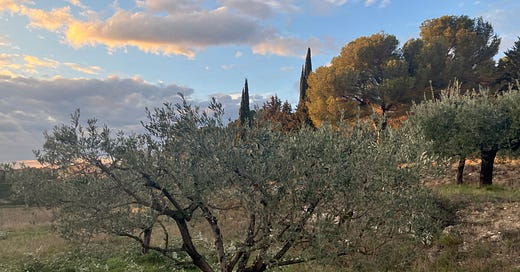



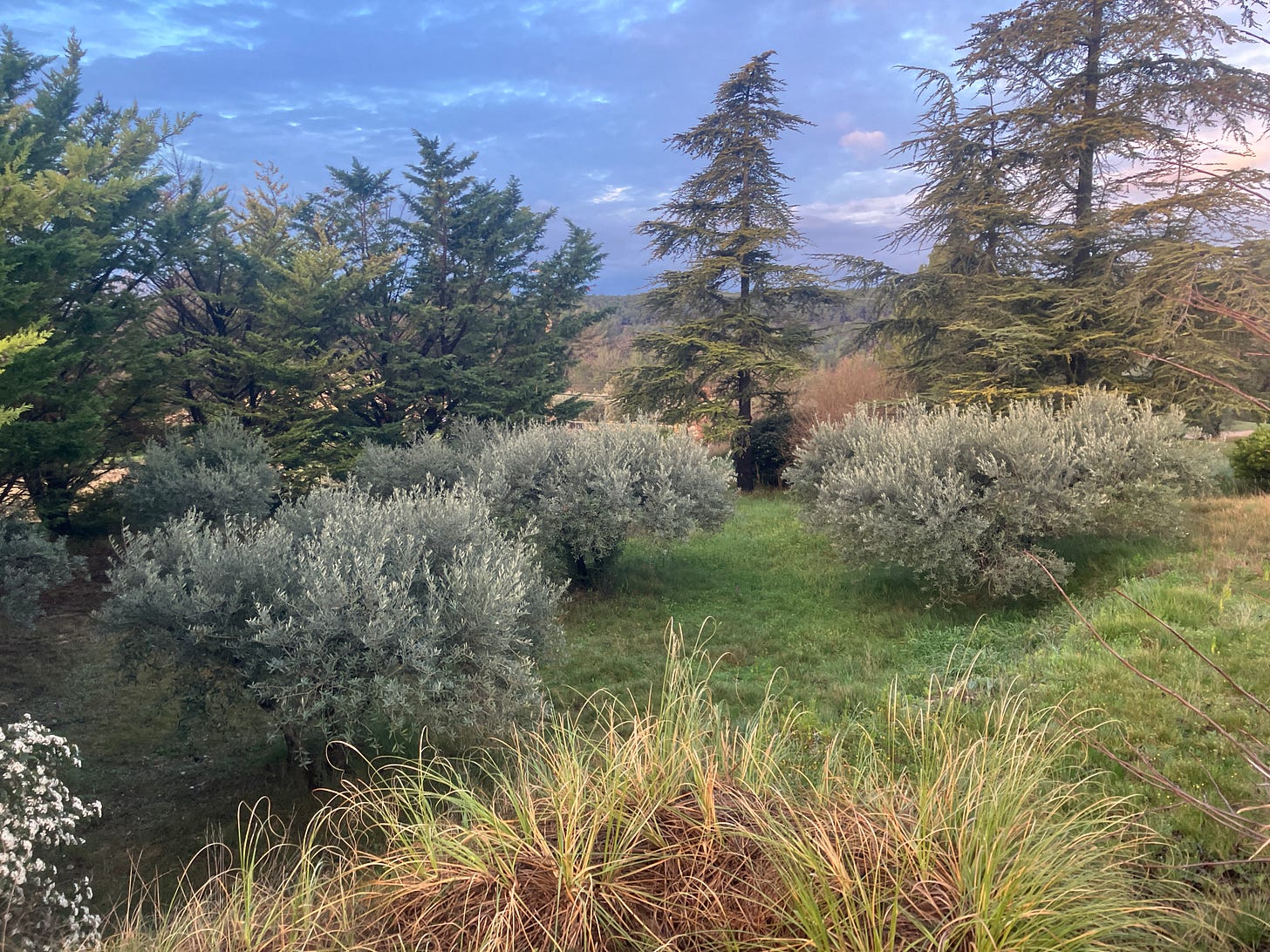
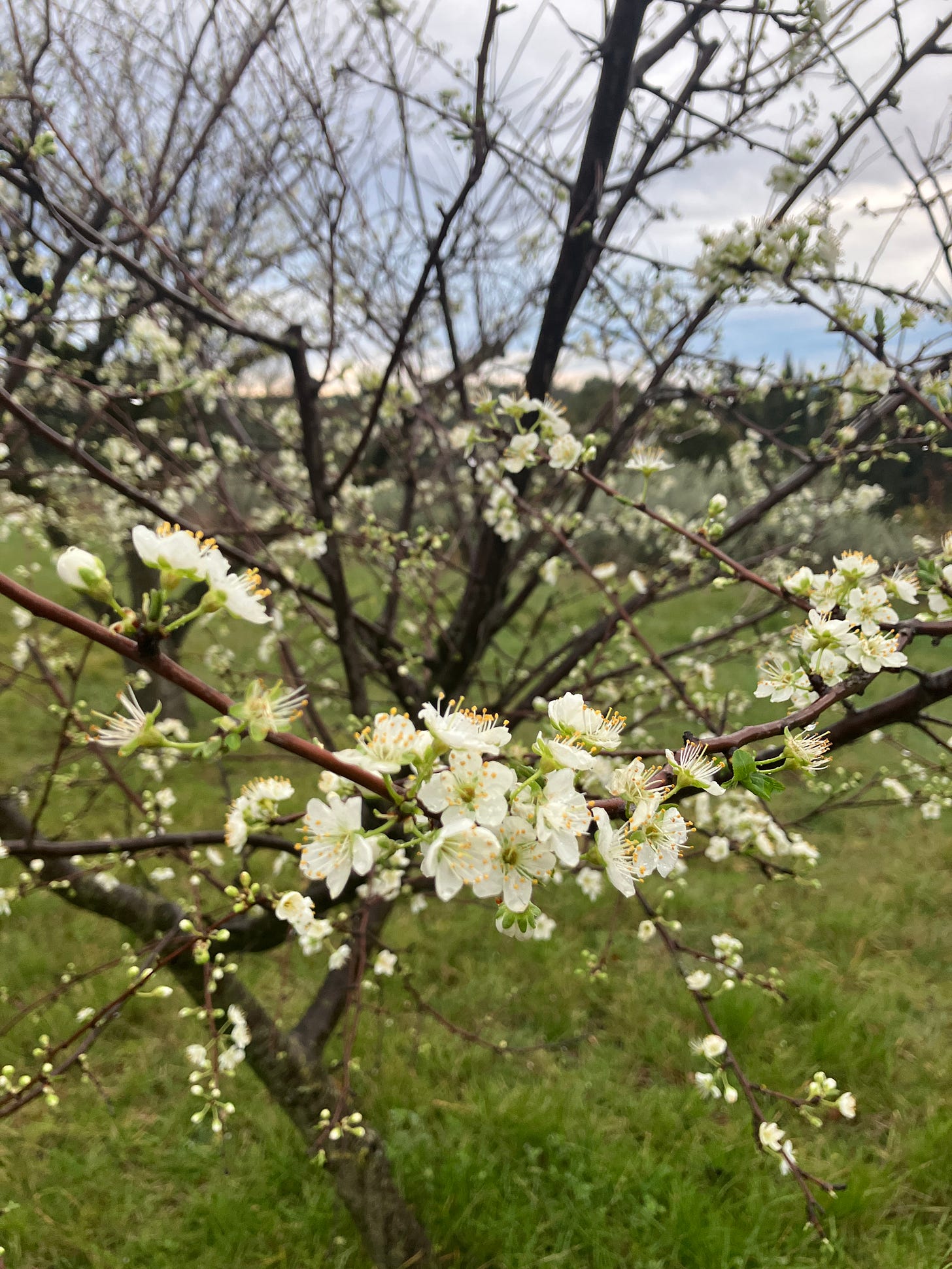
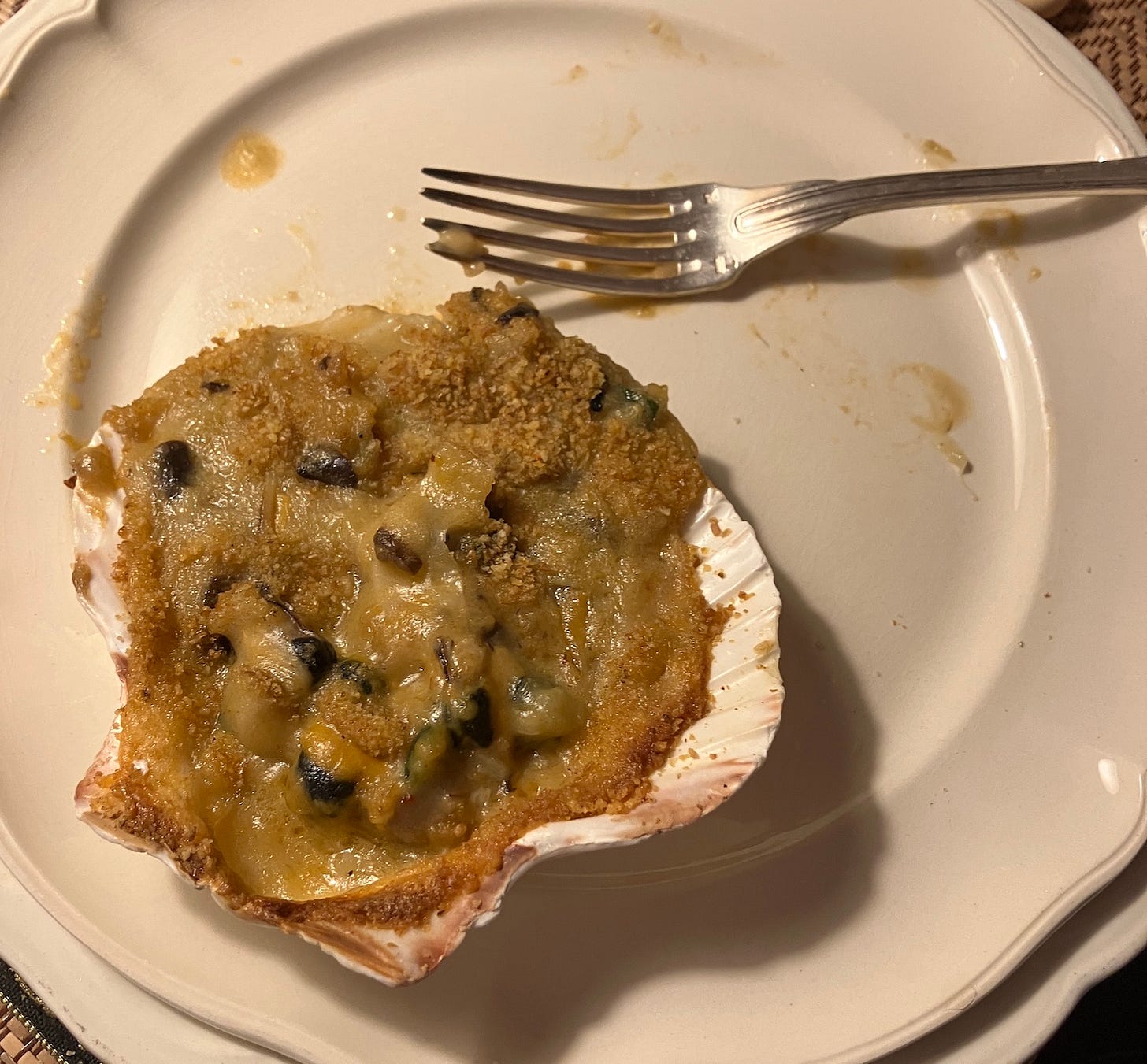
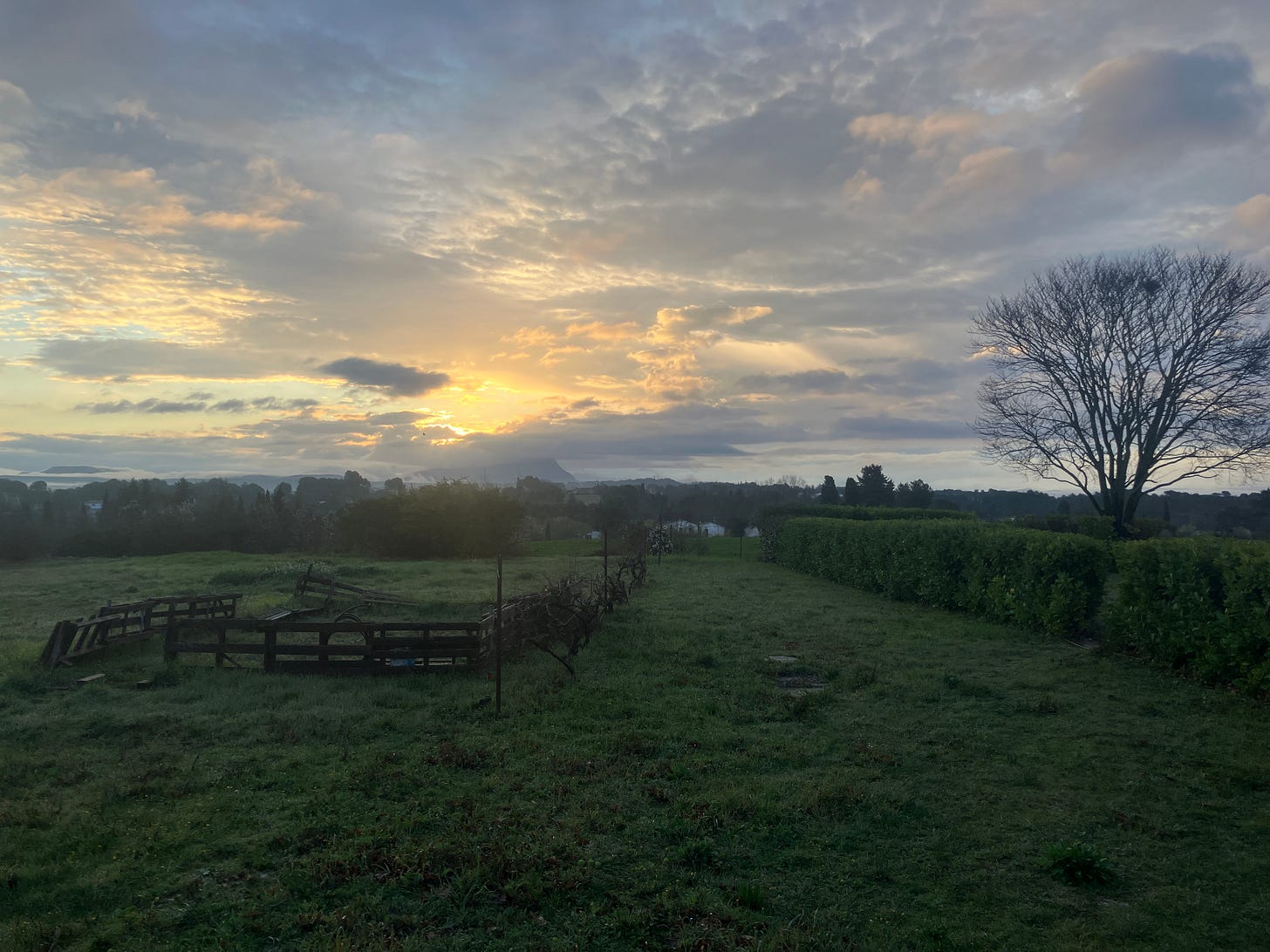
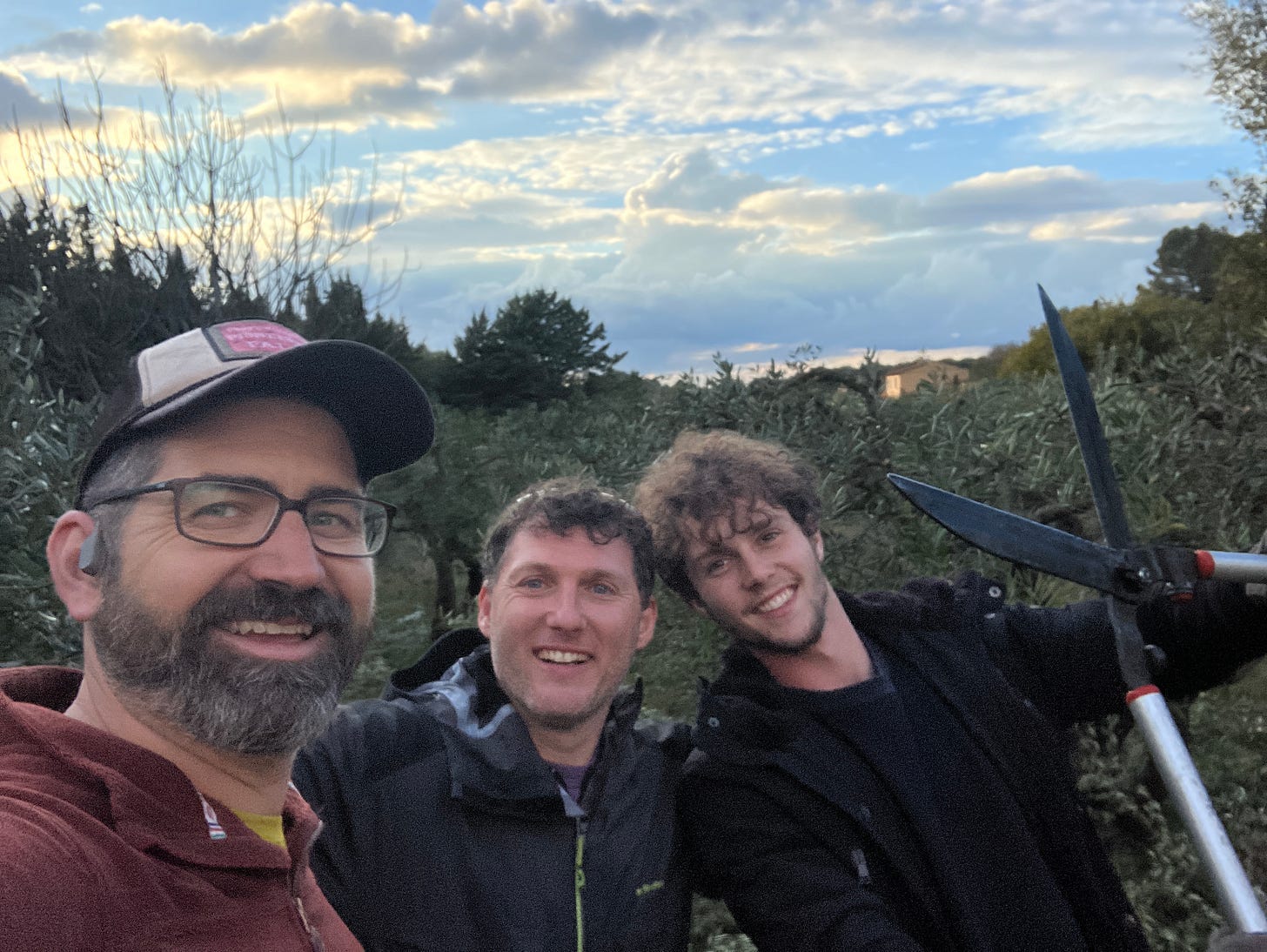
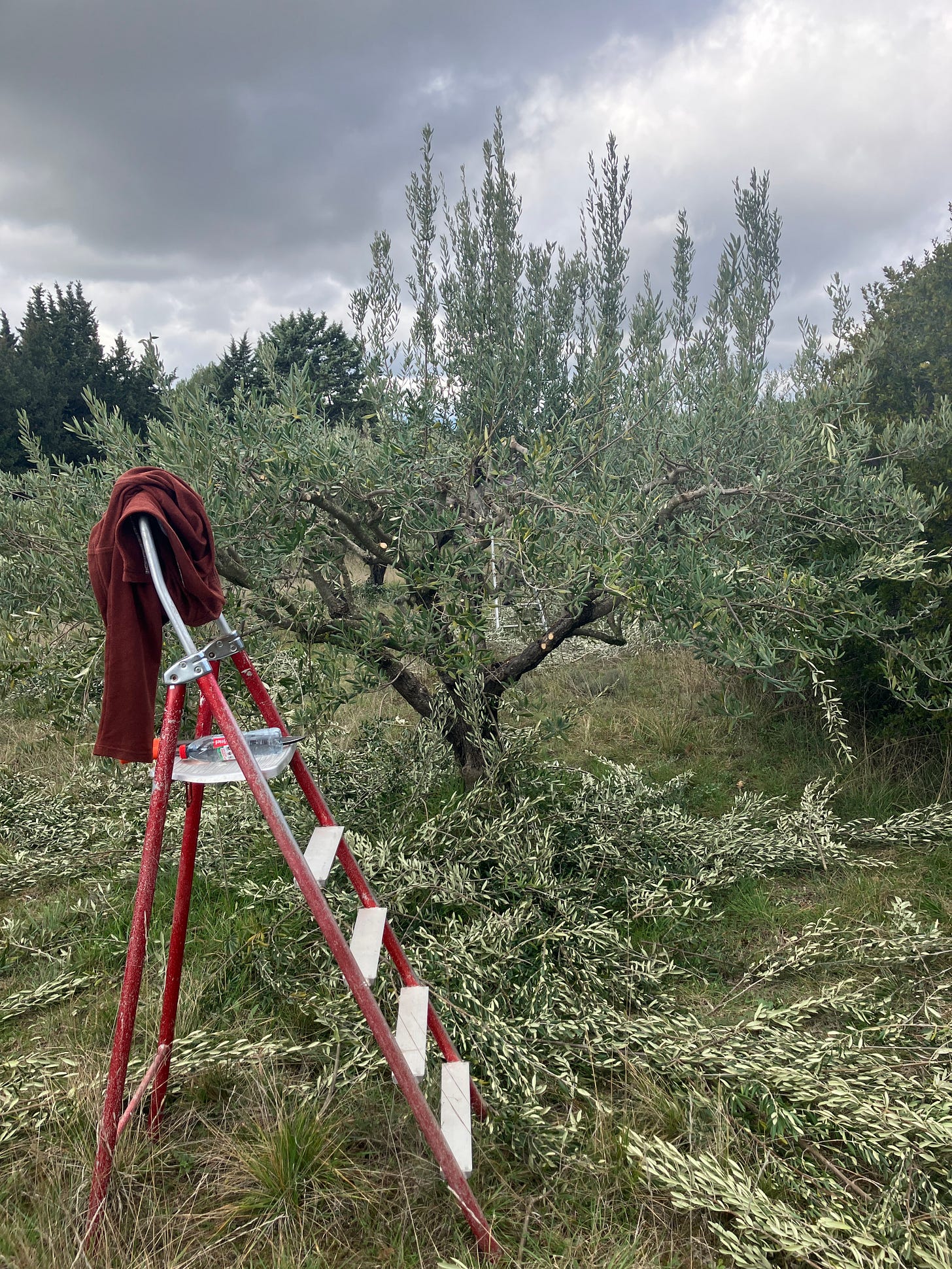
Beautiful - all pruning from roses to trees if done “thinking” like the plant grows can be rewarding! It’s life.